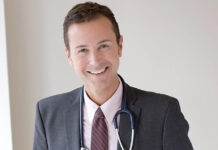
From its rich history to stunning sights, Mallorca’s majestic splendor is unparalleled
By Bonnie Siegler
For over a century, Mallorca (mai-orka) has been an extremely popular holiday destination, not only for Europeans but also for Hollywood elite. The largest island in the Balearic Islands Archipelago has something for everyone—it’s a trip that can be done over and over, each time with something new to explore. With six regions, countless beaches, beautiful mountain scenery, and a rich history dating from Moorish conquests to the Roman invasion, the island holds endless possibilities for beach bunnies and adventurists alike.
Choosing where to stay really depends on what you want to see and do, whether that’s experiencing the hustle and bustle of the capital, Palma, or enjoying a restful stay along the water or mountains. I preferred the history of Palma’s old town, where immersion in the local culture and customs made me feel as if I were a true local. I even found a charismatic café to have my morning coffee in.
The famous have long been drawn to the island’s 300 days of sunshine, beginning with composer Frederic Chopin, who spent the winter of 1838 there. More recently, Michael Douglas and wife Catherine Zeta-Jones, Antonio Banderas, Goldie Hawn, Eva Longoria, Sting, Harrison Ford, and others have been spotted strolling the winding cobblestone streets and sandy shores.
Mallorca doesn’t only boast natural majestic beauty: the people themselves display their loveliness from their happiness within. Don’t be surprised to see street musicians or bands set up in the old town’s squares for impromptu bouts of dancing and singing.

PLACES TO STAY:
My favorite place of respite is the 700-year-old Boutique Hotel Can Cera, located inside the old city walls and close to the Cathedral. During its long history, Can Cera has had many owners and undergone many renovations. However, the hotel maintains the influence of its Italian Renaissance architects with its terraces, interior courtyard and high ceilings of sculptured plasterwork. With only 14 rooms located on four floors, I stayed in what was the former mayor of Palma’s bedroom, since this was once his personal home. Three restaurants, a spa, meeting room and library give guests a walk through history. The Gastro Bar serves traditional Majorcan food with a modern twist.
Sisters to Can Cera are Boutique Hotel Calatrava, which overlooks the blue Mediterranean, and Boutique Hotel Can Alomar, located in the bustling, modern city of Palma.
“Can Alomar’s original building dates back to 15th century. The differences in the hotels are marked by the architectural features of the buildings,” says owner Miguel Conde Moragues. “Hotel Can Cera is a unique hotel in Palma and creates a perfect compromise between hotel and home. Hotel Can Alomar is located in the golden mile of the city and we have kept all the old elements, adding a warm, comfortable and contemporary décor to the interior.”
WHAT YOU NEED TO SEE:
Besides the many museums and various vineyards, here are a few notable sights.
Joan Miro Museum: The surrealist Spanish painter lived out his later years in Palma. In 1992, the Fundació Pilar i Joan Miró was established in Mallorca, where his paintings are on display.
Cathedral De Palma: This gothic Roman Catholic church took several centuries to complete—from 1230 to 1601—and can be seen from almost anywhere in downtown Palma. Designed in the Catalan
Gothic style with Northern European influences, it sits on the site of a Moorish-era mosque overlooking the Mediterranean Sea. Set aside at least three hours to view the entire Cathedral.
Arab Baths: Within the cobblestone streets of the medieval quarter of Palma and a stone’s throw from the former ancient Jewish settlement, is the only remaining Moorish-built building. Going into the rooms of the Arab bathhouse, which are still in very good condition, reveals how the Moorish lived during their occupation of Mallorca. After viewing the rooms, sit in the courtyard set amidst beautiful foliage and you’ll find peace and quiet in an otherwise busy city.
Beaches: Many tourists come for the beautiful beaches on the southern and eastern coast. While the sands can get crowded during high season, Playa Beach is a little cove set with its own restaurant—perfect for a more intimate day in the sun.
Regardless of how you choose to spend your time in Palma, it is important that you take time to expore its vast history.
“The essential is to know the historic centre of Palma, one of the richest in Europe that has a special vitality,” adds Moragues. “From the sea to the countryside, it’s sheer magnetism is on display in all aspects.”










